How animation visual style enhances storytelling?
Creating effective animated marketing videos relies on leveraging their visual power strategically, extending beyond simple narrative to support measurable marketing goals. Success hinges on clearly defined outcomes and guiding viewers toward specific actions.
Directing viewers effectively means employing clear and specific calls to action. Instead of vague prompts, action-oriented language like "Start Your Free Trial" or "Download the Report" resonates more directly, aligning with the viewer's likely stage in their engagement journey. Tracking video performance involves more than view counts; it means measuring the return on investment by comparing production costs against tangible value generated. This includes assessing increases in qualified leads or reductions in the sales cycle. Efficiency gains, such as fewer support tickets from users who grasped features through the video, also demonstrate value.
Storytelling through animation allows for showcasing products or services within relatable, real-world scenarios. Demonstrating features within relevant contexts builds viewer belief and highlights the product's perceived value by showing its integration into existing workflows. Analyzing viewer behavior provides crucial insights. Tools like heatmaps show exactly which parts of a video hold attention or cause drop-off, helping identify confusing segments. Incorporating social proof, such as showing recognized logos or user statistics, quickly builds credibility and trust within the narrative flow.
Optimizing animated storytelling marketing videos involves continuous refinement. A/B testing different elements—from initial visuals to the call to action—reveals what resonates most with the target audience, driving higher conversions. Tailoring a storytelling animation video for different platforms means considering the viewing environment and user intent. Videos for social feeds need instant hooks and potential soundless comprehension, while those on product pages can offer more detail, utilizing animation's capacity for clear, step-by-step explanation tailored to platform constraints and opportunities.
Role of character design in animated storytelling?
Within the compelling world of animated storytelling, characters are far more than just moving drawings. They are the heart of the narrative, serving as relatable guides and emotional conduits that deeply influence viewer connection and the video's ultimate success. Thoughtful character design transforms abstract ideas into tangible experiences, allowing audiences to see themselves or their challenges reflected on screen, making the message resonate on a personal level.
These carefully crafted figures help demonstrate how a product or service integrates seamlessly into real-world scenarios, showing potential users exactly how it fits into their lives or workflows. Their reactions and interactions lend credibility to the story, making product features feel more believable and accessible. This relatability is key; it encourages viewers to watch longer, providing valuable data through viewer behavior analysis on which moments truly capture attention and which might cause drop-off.
Distinct characters also elevate social proof. When these relatable figures are shown benefiting from the product or interacting with elements like recognizable company logos, it doesn't feel like a dry statistic; it feels like a shared positive experience. Moving towards the end of the story, characters can naturally lead the audience toward the desired action. A clear, specific call to action like "Start Your Free Trial" becomes a logical next step in the character's journey, guiding viewers effectively.
- Character design significantly impacts the authenticity of real-world product demonstrations.
- Analyzing viewer behavior provides insight into how characters hold engagement.
- Characters make the inclusion of social proof more impactful and trustworthy.
- Thoughtful design clarifies the path to conversion through intuitive calls to action.
- Different character styles can be measured and refined through A/B testing.
- The choice between, say, a vibrant 2D animated story video and a more detailed 3D animated story video impacts production resources, a factor when measuring return on investment.
- Character design adaptability is vital for optimizing videos across diverse platforms and viewing environments.
Effective character design isn't just about aesthetics; it's a strategic element that enhances every stage of the marketing funnel, from initial engagement to measurable conversions.
Building effective narrative structure in marketing video?
Building effective narrative structure in marketing videos goes beyond simply telling a story; it requires intentional design to guide viewers toward a desired outcome. While animated content naturally captures attention, making that attention translate into action depends heavily on the underlying narrative's clarity and persuasive power. Crafting an effective animated ad video demands immediately capturing attention, especially on fast-paced social feeds where initial seconds are paramount.
Successful narratives clearly define the problem and present the solution your offering provides, often showcasing real-world scenarios to make the product or service relatable. Demonstrating how it integrates into existing workflows or solves specific daily tasks increases its perceived value instantly. A compelling animated brand story can build deep trust by showcasing values and purpose, making the solution feel more meaningful within a larger context.
Measuring the impact of these narratives involves looking past simple view counts. We need to track metrics directly tied to business objectives. This includes comparing production costs against the value generated from increased qualified leads or evaluating the reduction in sales cycle length because prospects are better informed. Tracking tangible impacts like a reduction in support tickets is also key, often a direct result of comprehensive explainer videos clarifying product usage effectively.
Analyzing viewer behavior through tools like heatmaps provides granular insights, showing exactly which parts of the narrative resonate and where attention drops. This data is invaluable for refining the story. Furthermore, incorporating social proof like customer logos or statistics builds credibility quickly, and A/B testing elements such as the opening hook or call to action wording allows for continuous optimization of the narrative's effectiveness across different platforms.
Creating emotional connection with animated video?
Beyond simply captivating audiences, teams focus on strategic implementation to transform emotional resonance into measurable results. They understand that connecting deeply is the first step, followed by guiding viewers and understanding video impact. This involves careful planning around viewer actions and performance analysis.
Ensuring animated videos drive desired outcomes requires deliberate steps after creation. Creators utilize specific techniques to maximize engagement, understand audience interaction, and prove tangible value. This systematic approach ensures videos work hard throughout the marketing funnel.
- They ensure videos conclude with clear, specific calls to action tailored precisely to the video's goal and where the viewer might engage next, moving beyond vague prompts.
- Measuring return on investment involves tracking production costs against generated value such as increased qualified leads, accelerated sales cycles from better-informed prospects, or reduced support volume as users grasp concepts easily.
- Understanding viewer behavior through analytics like heatmaps reveals exactly which moments resonate or confuse, providing data for refinement, while integrating social proof like client logos builds immediate trust; an animated brand video can weave in these signals effectively.
- Optimizing through A/B testing different elements helps discover what resonates most, and adapting content for various platforms based on viewing environment and intent ensures maximum reach; an animated case study shared on LinkedIn might differ significantly from content on platforms favoring shorter formats.
These deliberate strategies allow teams to maximize the effectiveness of their animated content and achieve key business objectives.
Weaving brand story into animation narrative?
Integrating brand essence within animation narrative demands strategic thought. Businesses effectively infuse their identity showing real-world scenarios, demonstrating how services integrate seamlessly into customer workflows or daily tasks. Highlighting problem-solving capabilities specific to user industries increases perceived value. Building immediate trust is vital; subtly incorporating social proof elements, perhaps quick glimpses recognized client logos or compelling user statistics, lends strong credibility.
Measuring effectiveness drives iterative improvement. Calculating return on investment contrasts production costs against value generated. This value appears in increased qualified leads reaching sales teams, perhaps a reduced sales cycle length because prospects arrive better informed. Even fewer support tickets from users who fully understood features presented via animated content signals success. Analyzing viewer behavior provides crucial insights leveraging tools like heatmaps attention trackers revealing exactly parts resonate. Identifying watched, rewatched, or skipped sections reveals viewer interest patterns, pinpointing confusing segments or points engagement drops. This granular data informs improvements.
Optimizing for action and platform ensures reach. Clear, specific calls to action paramount at video conclusion. Action-oriented phrasing such as "Start Your Free Trial" resonates more generic "Learn More," tailored to viewer journey stage. Adapting content various platforms necessary; social feeds demand instant attention grabs, often needing text overlays sound-off viewing favoring brevity. An animated character video might build emotional connection, while animated explainer video clarifies complex offerings; each format requires specific brand narrative tailoring.
- Quantify value through metrics such increased qualified leads.
- Utilize viewer behavior analytics tools heatmaps understand engagement points.
- Move beyond generic CTAs using action-oriented phrasing.
- Conduct A/B tests on various video components including thumbnails opening sequences.
Pacing strategy for animated marketing videos?
Beyond outlining the problem and solution, effective pacing orchestrates how viewers absorb the answer to their need. It's not merely about speed; it's about guiding their attention, ensuring they follow the proposed resolution without getting lost or disengaged due to boredom or information overload. This crucial element dictates the rhythm of the narrative after empathy hooks the audience, ensuring a smooth transition to the solution.
How the solution unfolds rests heavily on strategic timing. Showing real-world scenarios requires pacing allowing features to shine in context, demonstrating clear value. Presenting complex aspects or multiple features within a limited time demands a pace balancing detail with clarity. Integrating the product into existing workflow integration needs a believable rhythm, one viewers can easily envision adopting themselves.
Understanding viewer interaction provides key insights for refinement. Analyzing behavior through heatmaps or viewer behavior analysis reveals exactly where pacing might cause confusion or loss of interest, pinpointing moments viewers rewatch or skip. A/B testing different delivery speeds or sequences can pinpoint optimal flow and reveal what resonates most with the target audience.
Strategic pacing builds momentum towards action. Clear, specific action-oriented text like "Start Your Free Trial" or "Request a Demo" lands better when the preceding content's pace prepares the viewer for that next step.
Weaving in social proof, perhaps flashes of well-known logos or user statistics, needs a pace supporting credibility without disrupting the primary solution narrative.
Platform dictates pace significantly. Videos for fast-scrolling social feeds need immediate impact, often adaptable without sound, unlike an animated how-it-works video on a product page allowing a more considered pace.
Measuring return on investment ties directly to how effectively pacing keeps viewers engaged through crucial information points, ultimately leading to desired conversions.
Intentional pacing, informed by data and tailored to platform, amplifies a video's ability to resonate and convert. An animated fundraising video, for example, might carefully vary pace to build emotional connection before its key message.
Using animation to simplify complex ideas?
Animation offers a powerful method to demystify complicated subjects, transforming dense information into clear, visual narratives. They take complex data or abstract concepts and make them accessible, helping audiences quickly grasp ideas that might otherwise feel overwhelming. Utilizing visual metaphors and simplified graphics, an animated infographic video, for example, excels at explaining intricate data points or abstract services effectively. Creators break down challenges into manageable steps viewers can easily follow.
Presenting processes step-by-step reduces confusion and aids comprehension. Showing how a product operates within relatable, real-world scenarios significantly enhances understanding and demonstrates tangible value. Even an animated internal video clarifying a new company process can make it simpler for everyone involved. Highlighting seamless integration into existing workflows further boosts perceived benefit and relevance for the audience.
To ensure these videos deliver results, guide viewers toward the next action. Incorporating clear, specific calls to action at the video's conclusion proves vital. Action-oriented text encourages viewers to progress. Measuring the return on investment tracks production costs against value generated, such as acquiring more qualified leads or reducing support tickets from users who understood features better from the video.
- Analyzing viewer behavior through tools like heatmaps provides critical insights, revealing exactly which segments capture or lose attention.
- Incorporating social proof, perhaps showing logos of well-known users, quickly builds credibility and trust with prospective customers.
- A/B testing different video elements, including the opening hook or call to action wording, helps refine content for higher audience engagement.
- Optimizing video content for specific platforms recognizes viewing environments; social feeds demand instant appeal and sound-off comprehension, while product pages accommodate greater detail.
A strategic combination of clear visual explanation, strong calls to action, and diligent performance analysis maximizes animation's power in simplifying complex messages and achieving marketing goals.
Employing visual metaphors in storytelling animation?
Building on the power of animated narratives, creators next focus on maximizing the impact of their animated marketing video through strategic implementation. Beyond captivating visuals and compelling stories, guiding the audience toward a specific action proves essential for achieving tangible business results. This involves careful consideration of how viewers interact with the content and what they are encouraged to do next.
Clear and specific calls to action are vital, moving past generic phrases. Instead, employing action-oriented text like "Request a Demo" or "Download the Report" directly links the video's message to desired outcomes, aligning the request with where viewers are in their journey. Measuring the return on investment becomes possible by tracking production costs against generated value, such as increased qualified leads or reduced support ticket volume from well-informed users.
Understanding viewer engagement at a granular level is key. Utilizing tools that provide video heatmaps reveals precisely which sections hold attention or cause drop-offs, offering invaluable data for optimization. Incorporating social proof, like brief flashes of recognized client logos or user statistics, builds credibility swiftly, assuring potential customers of the product's value. Demonstrating features within relatable, real-world scenarios further enhances believability, showing practical application.
- A/B testing different elements, including thumbnail images or the initial seconds, identifies what resonates most.
- Testing variations in CTA wording or placement optimizes conversion rates effectively.
- Optimizing content based on platform requires tailoring length and format for diverse viewing environments and audience intent.
- An animated process video explaining complex steps benefits from visuals adapted for quick comprehension on various devices.
These practical considerations, from guiding action to analyzing performance and adapting for platform specifics, transform animated storytelling into a powerful engine for achieving marketing objectives.
Power of character driven animated stories?
Character narratives serve as a powerful bridge, building on initial viewer engagement to guide them towards meaningful action. Generic calls to action simply do not suffice when aiming for conversion. Crafting clear, action-oriented text such as "Start Your Free Trial," "Request a Demo," or "Download the Report" becomes significantly more effective when woven into a character's successful journey or problem discovered and solved. Teams find these strategic calls resonate deeply, precisely aligning the desired viewer step with where they are in their exploration journey.
Measuring true impact involves a clear comparison of production costs against the tangible value generated for the business. This value can manifest directly as increased qualified leads, a reduction in the sales cycle length due to better-informed prospects, or even decreased support volume from users who gained clear feature understanding. Showing characters interacting with solutions in real-world scenarios makes features immediately relatable and significantly elevates perceived value, particularly when creating an animated product video where seamless integration into existing daily tasks is vividly demonstrated.
Understanding precisely how viewers engage with the narrative provides invaluable operational insight. Analyzing behavior through tools like heatmaps and attention trackers reveals exactly which story beats, character interactions, or feature demonstrations truly hold interest or unfortunately cause drop-offs. This granular data helps teams refine narrative flow and content for maximum impact. For an animated sales video, integrating social proof like brief flashes of well-known company logos quickly builds credibility and trust with potential customers, while consistently A/B testing different elements like thumbnails, opening scenes, or CTA placement optimizes overall performance for conversion across various platforms viewers might use.
- Tailored calls to action improve conversion rates significantly.
- Viewer analytics pinpoint narrative strengths and weaknesses precisely.
- Social proof enhances trust in presented solutions rapidly.
- Testing video elements drives continuous optimization effectively.
Character-driven narratives transform passive watching into active progression within the marketing funnel, effectively leading viewers towards desired outcomes and quantifiable business results.
Conveying brand personality through animation style?
Beyond the visual flair defining a brand's identity, effective animated marketing videos strategically guide viewers toward action. Creators understand that while style captures attention, deliberate choices turn passive watching into active engagement. It involves more than just looking good; it is about achieving tangible outcomes for businesses.
Ultimately, video effectiveness hinges on prompting the right next step. Instead of vague suggestions, specific calls to action are crucial. Think "Request a Demo" or "Start Your Free Trial" tailored to the viewer's likely intent after watching. The phrasing and presentation of these calls can even reflect a brand's unique personality, ensuring consistency across the viewer journey.
Success measurement completes the loop, showing the real impact of these visual stories. Evaluating return on investment means tracking costs against tangible gains. Analyzing how viewers interact provides vital clues, revealing what resonates and where attention might fade, enabling continuous refinement for better results.
- Metrics like increased qualified leads, a shorter sales cycle, or a reduction in support tickets demonstrate video value clearly.
- Analyzing viewer behavior through tools like heatmaps shows precisely which moments captivate or cause viewers to disengage.
- Integrating social proof, perhaps showing logos of well-known clients, quickly builds credibility and encourages trust with potential customers.
- Optimizing for various platforms means adapting content; an animated social video designed for quick scrolls differs greatly from an animated software video intended for detailed product pages. Rigorous A/B testing of elements like thumbnails or call to action placement reveals what truly drives conversions.





































